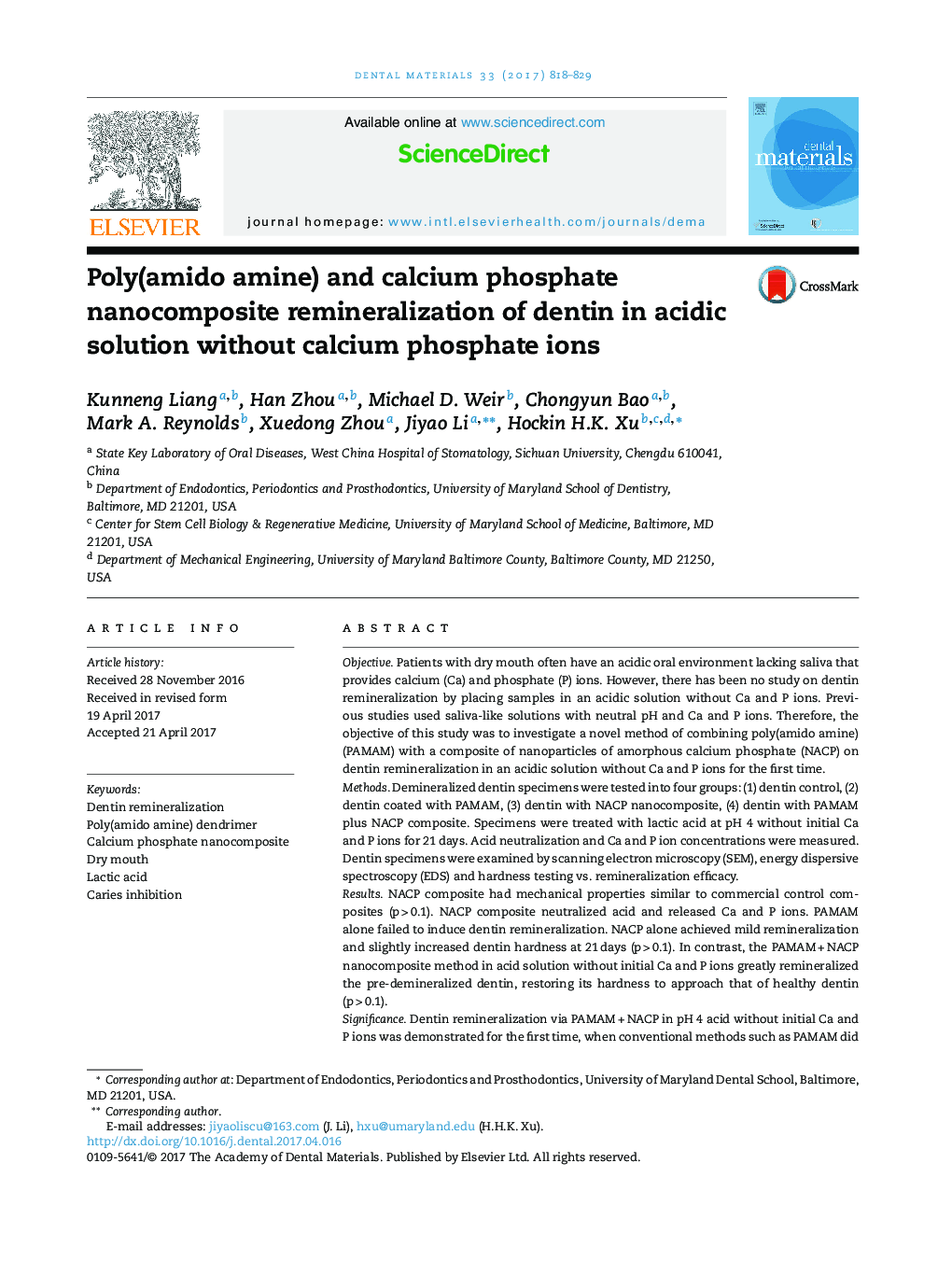| Article ID | Journal | Published Year | Pages | File Type |
|---|---|---|---|---|
| 5432938 | Dental Materials | 2017 | 12 Pages |
ObjectivePatients with dry mouth often have an acidic oral environment lacking saliva that provides calcium (Ca) and phosphate (P) ions. However, there has been no study on dentin remineralization by placing samples in an acidic solution without Ca and P ions. Previous studies used saliva-like solutions with neutral pH and Ca and P ions. Therefore, the objective of this study was to investigate a novel method of combining poly(amido amine) (PAMAM) with a composite of nanoparticles of amorphous calcium phosphate (NACP) on dentin remineralization in an acidic solution without Ca and P ions for the first time.MethodsDemineralized dentin specimens were tested into four groups: (1) dentin control, (2) dentin coated with PAMAM, (3) dentin with NACP nanocomposite, (4) dentin with PAMAM plus NACP composite. Specimens were treated with lactic acid at pH 4 without initial Ca and P ions for 21 days. Acid neutralization and Ca and P ion concentrations were measured. Dentin specimens were examined by scanning electron microscopy (SEM), energy dispersive spectroscopy (EDS) and hardness testing vs. remineralization efficacy.ResultsNACP composite had mechanical properties similar to commercial control composites (p > 0.1). NACP composite neutralized acid and released Ca and P ions. PAMAM alone failed to induce dentin remineralization. NACP alone achieved mild remineralization and slightly increased dentin hardness at 21 days (p > 0.1). In contrast, the PAMAM + NACP nanocomposite method in acid solution without initial Ca and P ions greatly remineralized the pre-demineralized dentin, restoring its hardness to approach that of healthy dentin (p > 0.1).SignificanceDentin remineralization via PAMAM + NACP in pH 4 acid without initial Ca and P ions was demonstrated for the first time, when conventional methods such as PAMAM did not work. The novel PAMAM + NACP nanocomposite method is promising to protect tooth structures, especially for patients with reduced saliva to inhibit caries.
